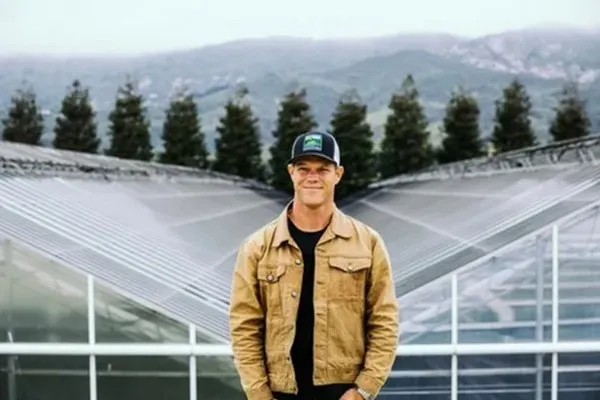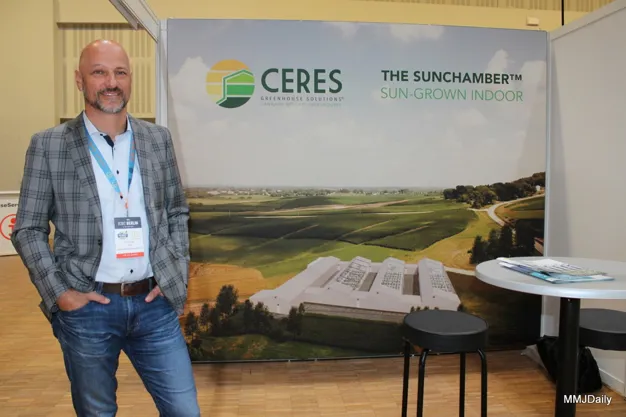It is that time of year again: the cannabis industry is getting ready for 4/20. In honor of the cannabis holiday, we bring back our special article series to take stock of what is happening in the industry. Every day this week, industry experts, growers, and suppliers will share their insights on their market's developments, challenges, and expectations for the future.
Continued right-sizing
How are things going in the largest cannabis market in the US? "The current market situation in California is challenging," says Graham Farrar, President of Glass House Farms. The company is expanding its production in phases, retrofitting a 5.5 million square foot greenhouse in Southern California. "Cultivation went through its reconciliation wave first, and now retail and the brands are going through theirs. That being said, the California market is the largest in the world. At nearly $5 billion, consumers in the Sunshine State smoke a lot of cannabis. We're really happy to be some of their favorite brands. Between our Glass House Farms and Allswell brands, we have the most consumed flower in the state."
Graham Farrar
According to Graham, some of the current biggest challenges are retail access and taxes. "It would be really helpful to see more stores open in good locations in California. Right now, there are probably only a quarter of the stores that the state should have, and they are all clustered tightly, while 60%+ of the state has no access. The taxes are also far higher than they should be. Of every $30 a consumer spends, $10 are going straight to taxes. What we need is less taxes and more retail."
When it comes to the future, Graham expects to see continued right-sizing of the industry. "I also think we will see Schedule 3 come through. I believe this would start a cascade of positive effects: the removal of 280e taxes, uplisting on major exchanges and lowering the cost of capital, and the start of interstate commerce, first in the form of interstate pacts, and then it will spread. Patients and consumers want the best cannabis for the best price and want to lower the impact on the environment - interstate commerce is the solution for both of those," Graham says.
A shifting focus
According to Chris Uhlig, CEO of Ceres Greenhouse Solutions, the cannabis market, both in the US and globally, continues to face significant challenges. "Domestically, there's an overarching issue of oversupply compounded by black market competition and consumer demand for lower prices. Additionally, factors like reduced consumption, high-interest rates, and the allure of more profitable alternative markets have added to the strain. Consequently, investors are shifting their focus elsewhere, leaving projects, companies, and their stakeholders in a precarious position. Many are left grappling with the aftermath, struggling to secure replacement investments and, in some cases, facing the risk of collapse."
Chris Uhlig
"The absence of effective knowledge sharing has allowed problematic actors to persist far longer within the industry than conventional sectors would tolerate," Chris adds. "This phenomenon manifests in various detrimental business practices such as 'pay-to-play' schemes, flawed business strategies, cash flow crisis, and insolvency issues. It's evident that the cannabis industry is still in its nascent stages, grappling with challenges stemming from regulatory constraints and its developmental phase. In contrast to industries like strawberry cultivation, where comprehensive solutions and established business models are readily available, the cannabis sector presents a different landscape. Here, the absence of robust knowledge exchange exacerbates existing challenges, impeding the pace of innovation and hindering overall progress."
So what about the future? "The most promising avenues for growth lie in strategic investments in brand development, as well as the anticipated expansion of the industry into new states and the establishment of clearer regulatory frameworks. With the prospect of interstate commerce looming on the horizon, it becomes imperative for outdated facilities to undergo modernization to align with evolving regulatory standards. Furthermore, the entry of new customer segments such as consumer packaged goods (CPG), pharmaceuticals, and nutraceuticals will introduce additional compliance requirements, drawing from sectors that have operated under stringent regulations for extended periods. These evolving demands will necessitate adaptations in facility design and operational protocols for cultivation and manufacturing. Now is the opportune moment for investors to position themselves and cultivate unique selling points such as distinctive brands, proprietary genetics, strategic retail partnerships, research collaborations with academic institutions, and artisanal cultivation methods. These elements will not only add value in the present but also pave the way for sustainable growth in the future," Chris says.
For more information:
Glass House Farms
www.glasshousefarms.org
Ceres Greenhouse Solutions
www.cerescann.com
